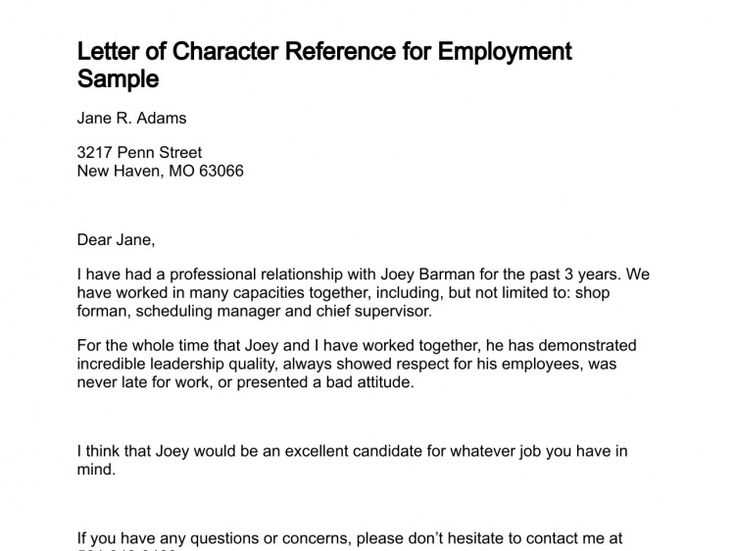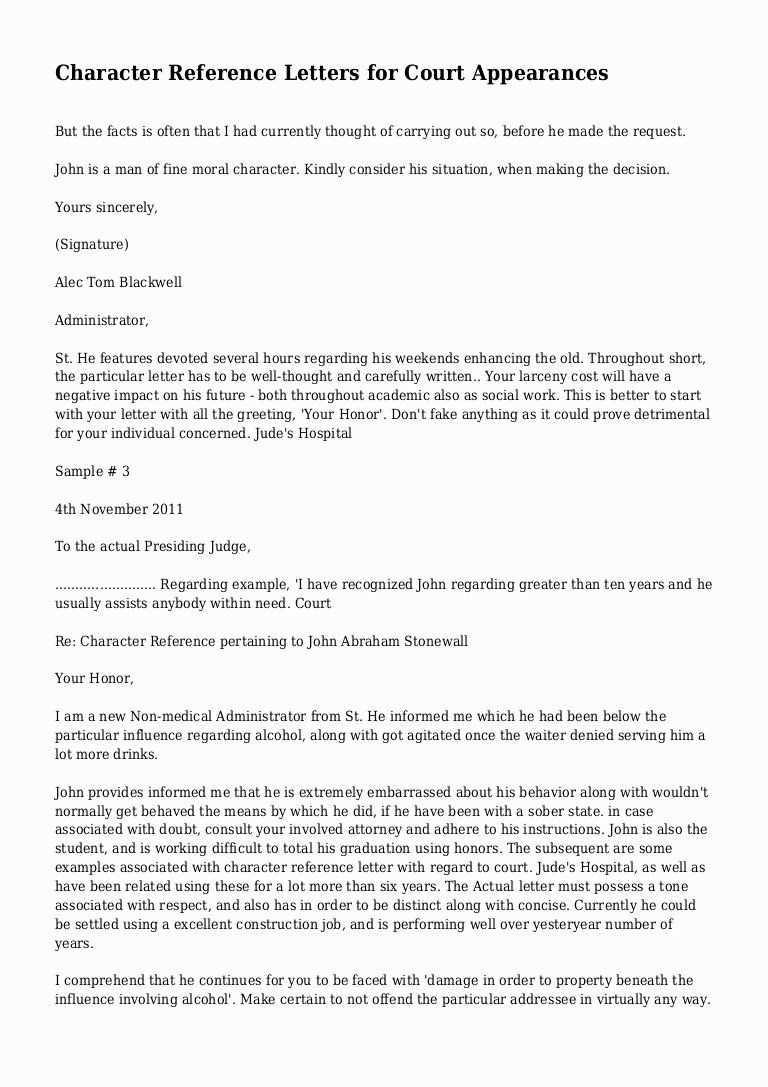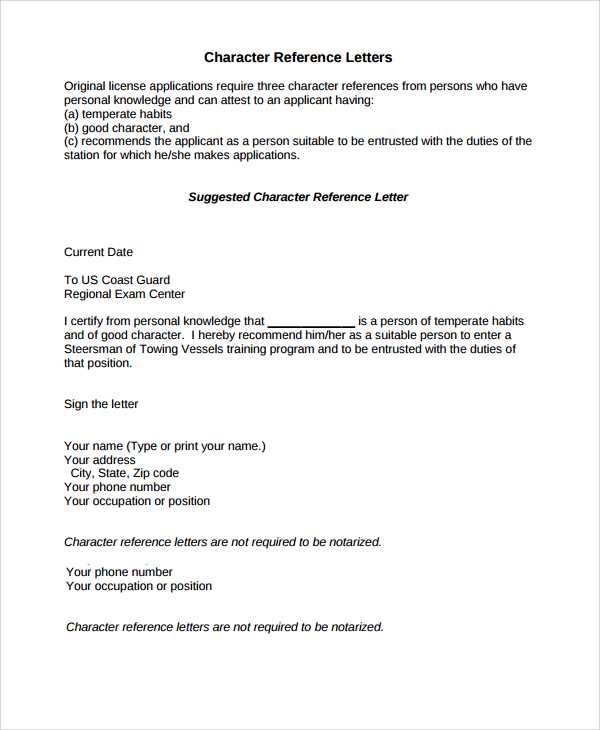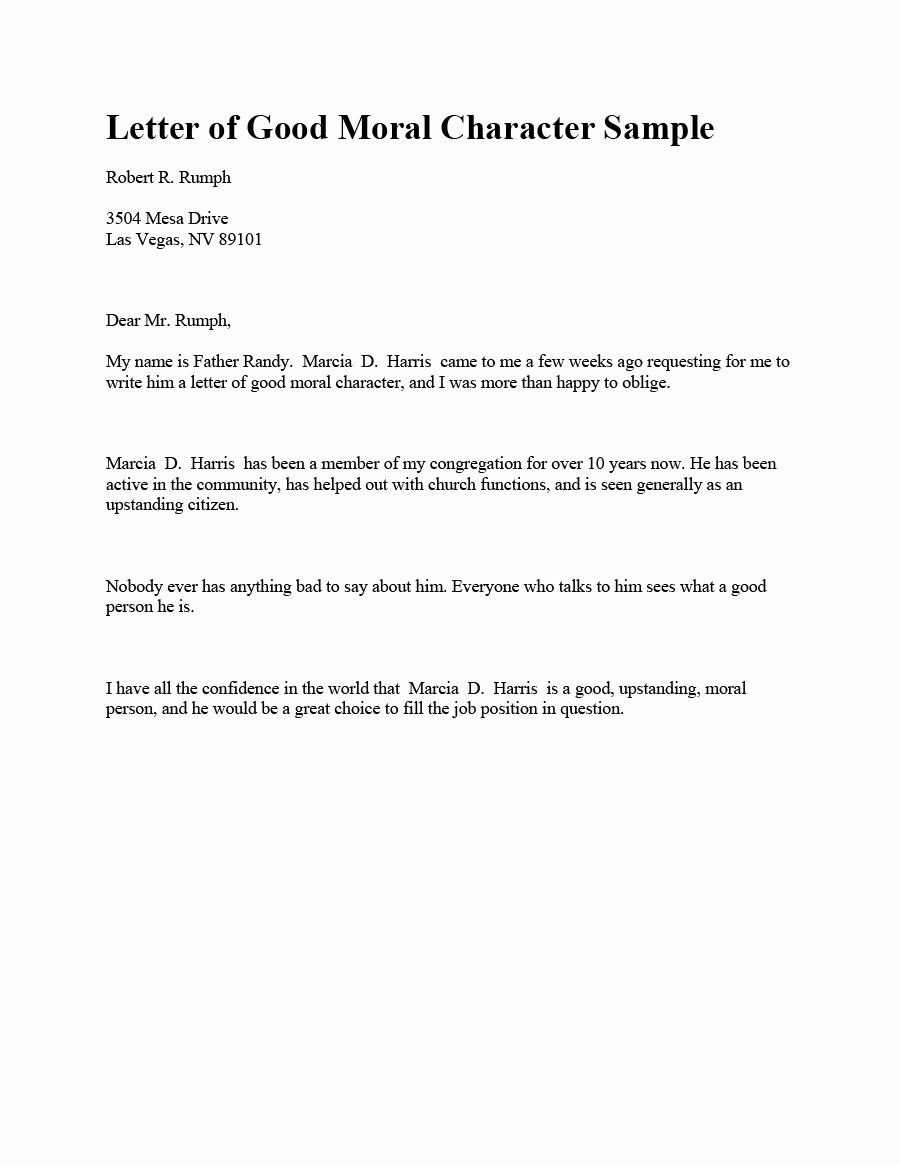Character Letter Templates for Every Need

In various situations, individuals may need to provide a written endorsement of someone’s character or conduct. Such statements can be essential in both professional and personal contexts, serving as a tool to vouch for someone’s integrity, reliability, or moral values. These written endorsements can make a significant impact, especially when applied to legal matters, job applications, or academic purposes.
While the core idea remains the same, the structure and tone of these documents can vary greatly depending on the circumstances. Whether it’s a formal recommendation for a job or a more personal affirmation of someone’s qualities, it’s crucial to know how to craft a compelling and sincere statement. This guide will explore the necessary components and best practices for creating an effective reference.
Understanding the format and the purpose of such statements is key. With the right approach, your endorsement can highlight the strengths of the individual in a way that resonates with the reader, ultimately helping them achieve their goal. The following sections will provide detailed guidance on how to construct an impactful message and avoid common pitfalls.
What Is a Reference Letter?
In many scenarios, individuals are required to submit a written statement that attests to someone’s personal qualities, conduct, or achievements. This type of document plays a significant role in various processes, such as job applications, legal matters, or academic submissions. It serves as a means for one person to recommend another based on their observations and interactions.
These endorsements can be essential for showcasing someone’s character, highlighting their strengths, and demonstrating their suitability for a particular role or opportunity. A well-written statement can provide insight into the individual’s personality, reliability, and moral values, influencing the decision-making process of the recipient.
The contents of such a document may vary depending on the purpose, but typically include the following key elements:
- The relationship between the writer and the subject.
- Specific examples that illustrate the individual’s positive attributes.
- An overall evaluation of the person’s character or abilities.
- A clear and sincere recommendation for their future endeavors.
Writing an effective statement requires careful consideration of the context, tone, and specific details that will resonate with the reader. It is important to balance professionalism with authenticity, ensuring that the message is both credible and persuasive.
Purpose and Significance of Personal Endorsements

In various circumstances, individuals may need to present written support for someone’s qualities or actions. These documents carry significant weight in both personal and professional contexts, often serving as a means of validating a person’s reputation or moral standing. Their primary goal is to provide an honest and thoughtful assessment of the individual, offering insights into their behavior, achievements, or general conduct.
Such endorsements are often requested when an individual is seeking a job, applying for academic programs, or involved in legal matters. They are used to reassure the reader about the person’s credibility and trustworthiness. These statements can also influence decisions that impact the individual’s future opportunities and reputation.
Why Are They Important?
The impact of these documents goes beyond just presenting facts. They have the ability to shape perceptions, enhance personal credibility, and sometimes even change the course of important decisions. A well-crafted endorsement can strengthen an application, increase the likelihood of success, or help resolve disputes by providing a balanced and reliable perspective.
When Are They Used?
Personal endorsements are widely used in a range of situations, including:
| Situation | Purpose |
|---|---|
| Job Applications | To demonstrate professional qualities and work ethic. |
| Legal Proceedings | To provide insight into moral standing or integrity. |
| Educational Programs | To validate academic potential and character. |
| Volunteering or Community Roles | To highlight trustworthiness and social responsibility. |
Ultimately, these written statements serve to create a more holistic view of an individual, presenting qualities that may not be immediately apparent in other forms of documentation. By effectively articulating positive traits, they contribute to building trust and making informed decisions.
How to Structure a Personal Reference

Creating a well-organized and effective endorsement requires a clear structure that allows the reader to easily understand the individual’s strengths and qualities. The layout of such a statement should follow a logical flow, making it both comprehensive and concise. Proper organization helps ensure that key information is highlighted and that the message is both persuasive and easy to follow.
A typical structure for this type of document consists of several essential components. These parts not only provide a cohesive message but also ensure that the document fulfills its purpose of supporting the individual’s application or request.
The following structure is recommended for an impactful reference:
- Introduction: Briefly introduce yourself and your relationship with the individual. Mention how long you’ve known them and in what capacity.
- Key Attributes: Highlight the person’s positive qualities with specific examples. Discuss their work ethic, personality, or skills that make them stand out.
- Specific Contributions: Include real-life situations where the person demonstrated these qualities, providing context and credibility.
- Conclusion: Summarize your endorsement, reaffirming your support and making a clear recommendation for the individual’s future endeavors.
By following this structure, you create a reference that presents the individual in the best light, showcasing their strengths in a way that resonates with the reader. This approach ensures that your message is both compelling and easy to digest, increasing the chances of a positive outcome for the person you’re supporting.
Essential Sections for a Strong Endorsement
To write an effective recommendation, it’s important to include several key components that provide a comprehensive view of the individual’s qualifications and character. Each section should serve a specific purpose, helping the reader form an accurate understanding of the person’s strengths and suitability for a particular role or opportunity. Including all the essential elements ensures that the message is complete, credible, and compelling.
The following sections are crucial for crafting a strong endorsement:
- Introduction: Start by stating your relationship with the individual. Mention how long you have known them and in what context, such as professionally or personally.
- Overview of Strengths: Highlight the individual’s key qualities, such as their work ethic, attitude, or skills. Use specific traits that make them stand out and demonstrate why they are well-suited for the position or opportunity.
- Concrete Examples: Provide specific instances where the person displayed the qualities you mentioned. These examples lend credibility to your recommendation and help the reader see the person’s strengths in action.
- Conclusion and Recommendation: Summarize your thoughts and provide a clear, supportive recommendation. This section should reinforce your belief in the person’s abilities and suitability, making it clear that you endorse them without reservation.
By including these sections in your endorsement, you create a well-rounded and persuasive document that presents the individual as a trustworthy and qualified candidate for whatever they are seeking.
Examples of Various Endorsement Forms
There are several types of written recommendations, each tailored to specific situations and purposes. These endorsements differ in tone, structure, and content depending on the context in which they are used. Understanding the differences between these forms is crucial for crafting an effective message that aligns with the intended goal, whether it’s for professional, legal, or personal purposes.
Below are examples of various types of endorsements and the context in which they are typically used:
- Professional Recommendation: Used when applying for a job or promotion, this form focuses on an individual’s work-related skills, accomplishments, and contributions to the workplace.
- Personal Endorsement: Typically used for personal situations, such as applying for a loan or character assessment, this form highlights the individual’s integrity, reliability, and personal qualities.
- Academic Reference: Often required for college or university applications, this type emphasizes the person’s academic achievements, intellectual potential, and contributions to the educational environment.
- Legal Statement: Used in court cases or other legal matters, this type of endorsement may focus on the individual’s behavior, moral standing, or character, with the intent to support their position or demonstrate their trustworthiness.
- Community or Volunteer Reference: Commonly used for roles in volunteer work or community service, this form highlights an individual’s commitment to social responsibility, teamwork, and contributions to the community.
Each of these examples serves a distinct purpose and should be tailored to emphasize the qualities most relevant to the specific situation. By understanding the format and expectations for each type of endorsement, you can ensure that your written support is both impactful and appropriate for the intended use.
Guidelines for Crafting a Powerful Reference
Writing a compelling endorsement requires a thoughtful approach to both content and structure. A well-crafted recommendation can have a significant impact on the individual’s opportunities, so it’s essential to ensure that the message is clear, convincing, and tailored to the specific context. By following some basic principles, you can create a reference that effectively supports the person and highlights their strengths in a persuasive manner.
Focus on Specificity

Vague statements can weaken the message, so it’s important to provide concrete examples that demonstrate the individual’s positive traits. Rather than making general claims, use real-life situations that showcase their skills, behavior, or contributions. This will make your endorsement more credible and relatable, helping the reader see the person’s potential more clearly.
Maintain a Positive and Professional Tone
While it’s essential to be honest, it’s equally important to maintain a positive and professional tone throughout the recommendation. Even if you’re addressing challenges or areas for improvement, frame them constructively, focusing on the person’s growth or ability to overcome obstacles. A balanced approach will help create a well-rounded and fair endorsement.
Keep the focus on the individual throughout the endorsement. Make sure that the recommendation centers around their achievements, values, and the qualities that make them a suitable candidate for the specific purpose at hand. A personalized, well-structured message is far more impactful than a generic endorsement.
By following these guidelines, you can craft a powerful and persuasive reference that truly reflects the individual’s strengths and makes a lasting impression on the reader.